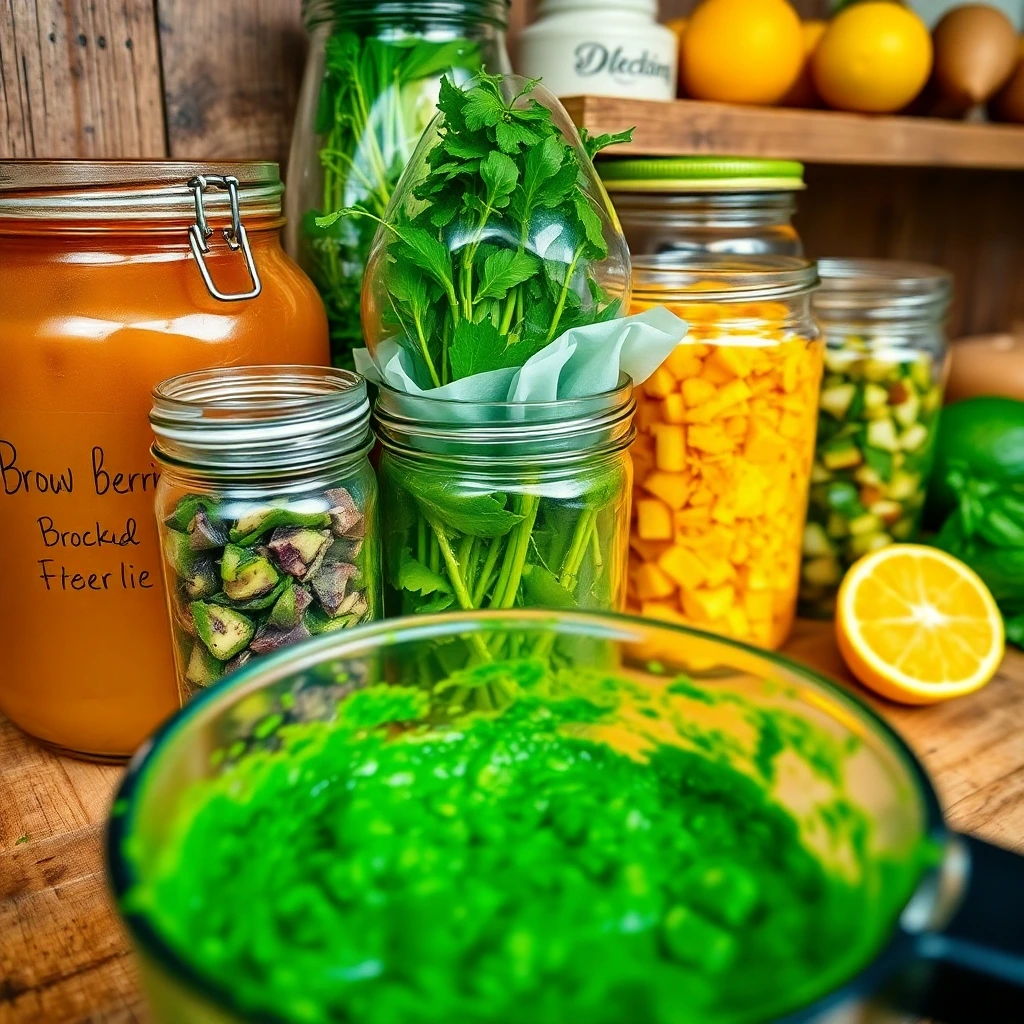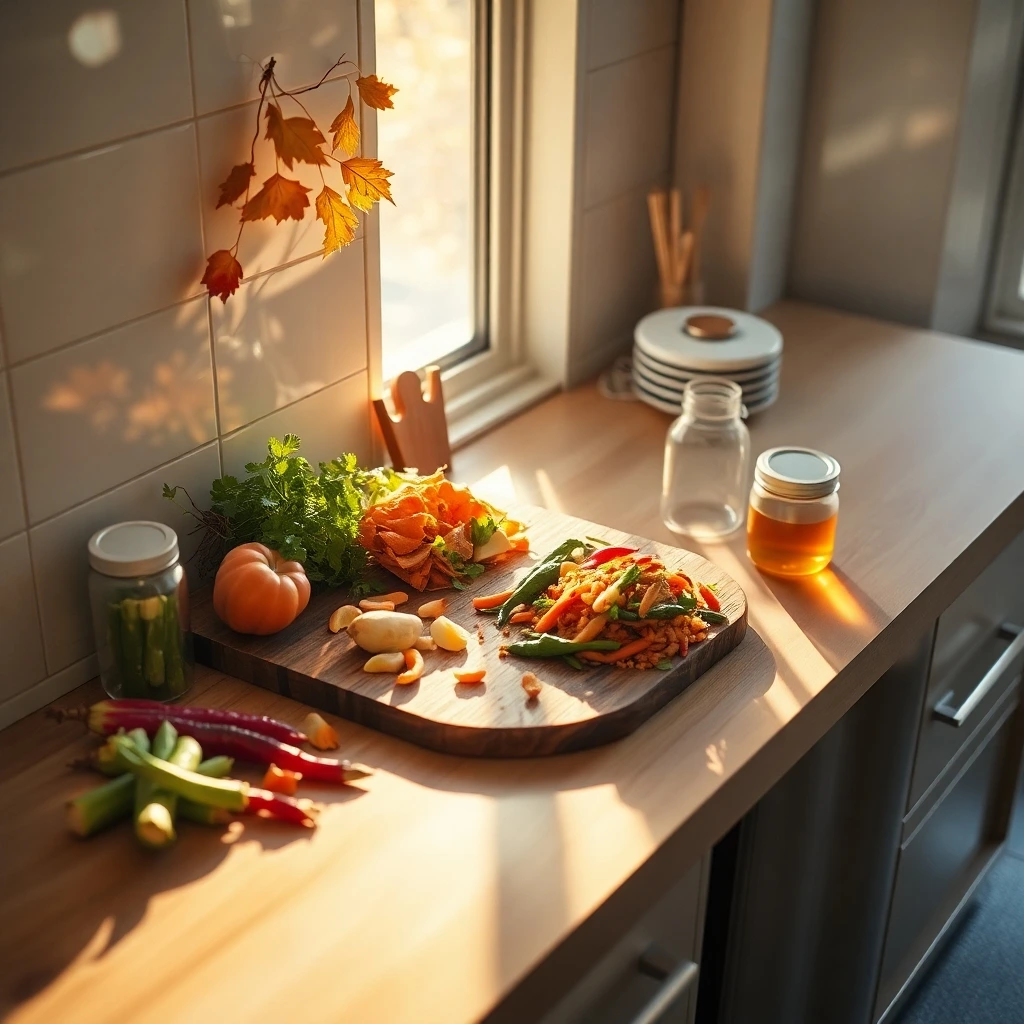Introduction: The Hidden Potential in Your Kitchen Scraps
Zero-Waste Kitchen: Picture this—you’re chopping vegetables for dinner, tossing carrot tops, onion skins, and broccoli stems into the trash. But what if those scraps could become the foundation of a flavorful broth, a vibrant pesto, or even a zesty marmalade? The truth is, your kitchen waste isn’t just clutter—it’s a treasure trove of flavor, nutrients, and savings waiting to be unlocked.
Globally, 1.3 billion tons of food are wasted annually, contributing to 8% of greenhouse gas emissions (FAO, 2023). In your own home, this translates to roughly $1,500 tossed into the bin each year (USDA, 2022). But with a few simple strategies, you can turn this cycle around, creating gourmet meals while nurturing a sustainable lifestyle. Let’s dive in.
Why Zero-Waste Cooking Matters More Than Ever
Environmental Impact
When food scraps decompose in landfills, they release methane—a greenhouse gas 25 times more potent than carbon dioxide. Moreover, by repurposing kitchen waste, you’re not just reducing trash; in fact, you’re actively combating climate change.
Economic Benefits
Imagine saving hundreds of dollars annually by using every bit of your groceries. For instance, stale bread becomes croutons, herb stems transform into sauces, and citrus peels morph into tangy garnishes. As a result, waste-free cooking stretches your budget without sacrificing quality.
Nutritional Value
Scraps like kale stems, potato skins, and watermelon rinds are often richer in fiber and vitamins than the parts we typically eat. Take broccoli stems, for example: They contain more calcium and vitamin C than the florets, ultimately making them a hidden superfood
Essential Tools for Your Zero-Waste Kitchen
Must-Have Tools
To embark on your waste-free journey, a few key items will streamline the process:
- Glass Jars: Perfect for storing homemade broths, pickled scraps, or infused oils.
- Reusable Silicone Bags: A great way to freeze herb scraps or citrus zest without relying on single-use plastics.
- Compost Bin: An eco-friendly solution for non-edible scraps like avocado pits or coffee filters.
- High-Speed Blender: Ideal for blending pestos, sauces, or smoothies using leftover produce.
Budget-Friendly Swaps
Zero-waste cooking doesn’t require a hefty investment. Consider these alternatives:
- Repurpose old pasta sauce jars for bulk storage.
- Use beeswax wraps instead of plastic cling film.
- Turn an old coffee can into a compost container.

Creative Ways to Repurpose Common Scraps
Vegetable Scraps
- Broth Basics: Simply simmer onion skins, carrot tops, and celery leaves in water for 30 minutes. Then, strain the liquid, and you’ve got a nutrient-rich base for soups or risottos!
- Pesto Power: For a flavorful twist, blend herb stems (parsley, cilantro) with garlic, nuts, and olive oil to create a bold and delicious sauce!
H3: Stale Bread
- Croutons: Toss cubed bread with olive oil and herbs, then bake at 375°F until crispy.
- Bread Pudding: Combine with milk, eggs, and cinnamon for a decadent dessert.
H3: Coffee Grounds
- Exfoliant: Mix with coconut oil for a DIY scrub.
- Meat Rub: Combine with brown sugar and paprika for a smoky barbecue seasoning.
Table 1: Scrap-to-Recipe Cheat Sheet
| Scrap | Recipe Idea | Key Ingredients |
|---|---|---|
| Potato peels | Crispy peel chips | Olive oil, salt, paprika |
| Citrus rinds | Candied peels | Sugar, water |
| Herb stems | Green sauce | Olive oil, garlic, Parmesan |
Gourmet Recipes That Celebrate Scraps
Root-to-Leaf Veggie Stir-Fry
Ingredients:
- Carrot tops, beet greens, radish slices
- 2 cloves garlic, minced
- 1 tbsp soy sauce
- 1 tsp sesame oil
Steps:
- Heat sesame oil in a pan.
- Sauté garlic until fragrant.
- Add greens and cook until wilted.
- Drizzle with soy sauce and serve over rice.
H3: Citrus Peel Marmalade
Ingredients:
- Peels from 4 oranges (thinly sliced)
- 1 cup sugar
- 2 cups water
Steps:
- Blanch peels in boiling water to reduce bitterness.
- Simmer with sugar and water for 45 minutes until thickened.
- Store in a glass jar for up to two weeks.

Table 2: Citrus Marmalade Recipe
| Ingredient | Quantity | Preparation |
|---|---|---|
| Citrus peels | 2 cups | Thinly sliced, blanched |
| Sugar | 1 cup | Dissolved in 2 cups water |
Building a Circular Food System at Home
Smart Meal Planning
- Prioritize Perishables: Design meals around ingredients that spoil quickly, like leafy greens or berries.
- Batch Prep: Dedicate Sundays to making broths, sauces, or frozen scrap packs for future use.
H3: Preservation Techniques
- Freezing: Store herb-infused oils in ice cube trays.
- Pickling: Preserve onion skins or radish tops in vinegar brine.
H3: Composting Made Simple
Even with careful planning, some scraps are inedible. Here’s how to compost effectively:
- Compostable: Fruit peels, coffee grounds, eggshells.
- Non-Compostable: Dairy, meat, oily foods.
According to the EPA, composting can reduce methane emissions by 30%, thereby making it a critical step in waste reduction
Conclusion: Your Kitchen, Your Planet
The journey to a zero-waste kitchen begins with a single step. First, start by saving vegetable scraps in a freezer bag for your next broth. As you continue, you’ll discover that “waste” is merely a matter of perspective. Moreover, remember that this isn’t about perfection—it’s about progress. Finally, share your creations with #ZeroWasteKitchenHacks and inspire others to reimagine their scraps.

FAQs About Zero-Waste Kitchen Hacks
- Q: Can zero-waste kitchen hacks really save money?
- Absolutely. For example, homemade vegetable broth costs pennies compared to store-bought versions.
- Q: What’s the easiest hack for beginners?
- For example, regrow green onions in a glass of water on your windowsill. In just a few days, they’ll sprout new shoots, giving you fresh greens to use again!
- Q: Are meat scraps usable in zero-waste cooking?
- Yes! Simmer bones for broth or render bacon fat into cooking oil.
Call to Action
Are you ready to revolutionize your kitchen? If so, share your favorite hack in the comments—we’d love to hear from you!
“Want more inspiration? Explore these 10-Minute Dinners for Busy Weeknights to make the most of your kitchen scraps in no time!”


2 thoughts on “Zero-Waste Kitchen Hacks: Turn Scraps into Gourmet Meals”